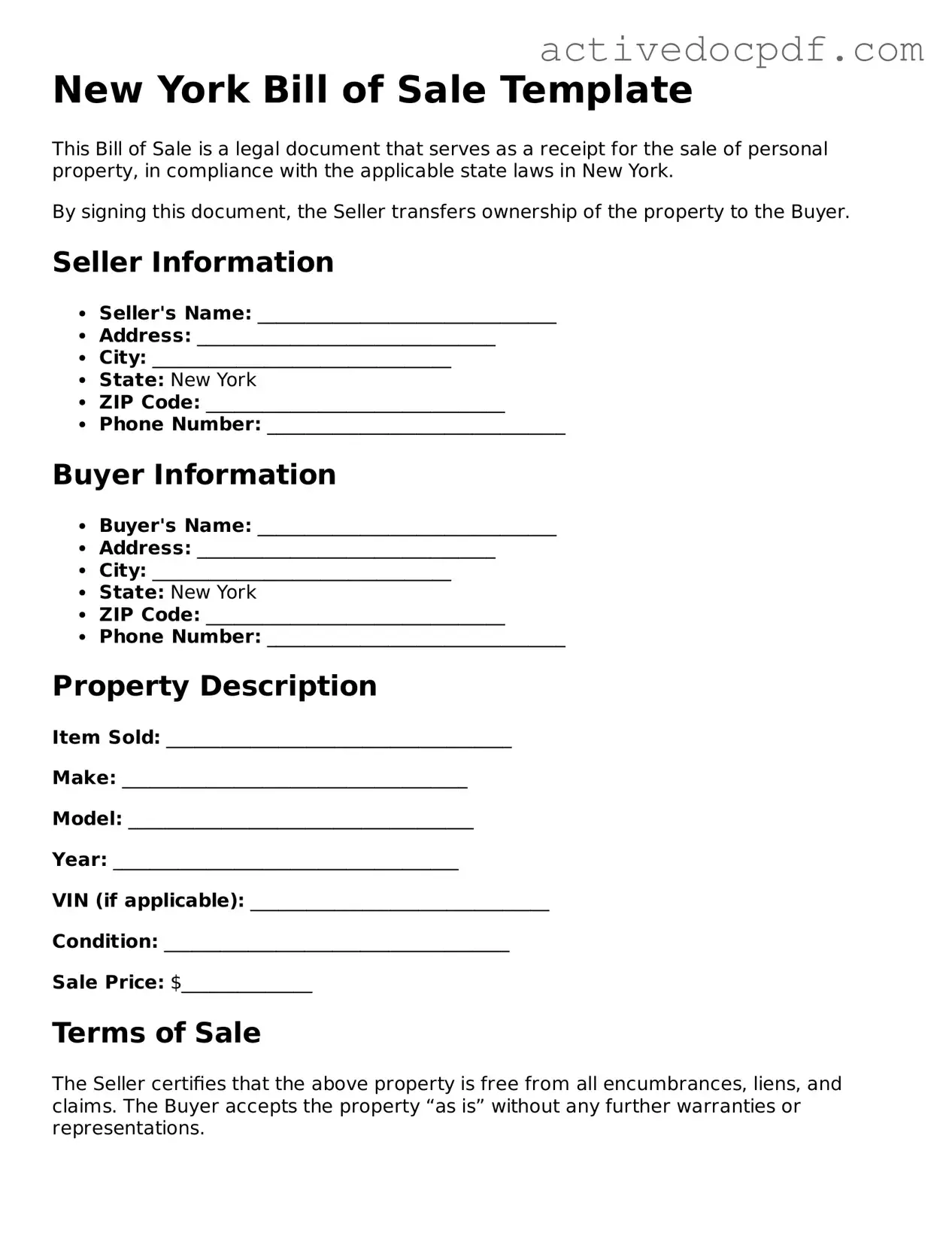What is a New York Bill of Sale?
A New York Bill of Sale is a legal document that serves as proof of the transfer of ownership of personal property from one individual to another. This document is essential for various transactions, including the sale of vehicles, boats, and other personal items. It outlines the details of the transaction and protects both the buyer and the seller by providing a record of the agreement.
When do I need a Bill of Sale?
A Bill of Sale is typically required in the following situations:
-
When selling or buying a vehicle.
-
For transactions involving boats, trailers, or other recreational vehicles.
-
When selling valuable personal property, such as jewelry, art, or electronics.
-
In private sales, where no formal receipt is provided.
Having a Bill of Sale helps establish clear ownership and can be critical for registration or title transfer purposes.
A comprehensive Bill of Sale typically includes the following information:
-
The names and addresses of both the buyer and the seller.
-
A description of the item being sold, including make, model, year, and any identifying numbers (like VIN for vehicles).
-
The sale price and payment method.
-
The date of the transaction.
-
Signatures of both parties, indicating their agreement to the terms.
Including all these details helps to avoid disputes and provides clarity for both parties involved.
Is a Bill of Sale required for all transactions?
While a Bill of Sale is not legally required for every transaction in New York, it is highly recommended. For larger transactions or items that require registration, such as vehicles, a Bill of Sale may be necessary to complete the process. Even for smaller sales, having a Bill of Sale can protect your interests and provide documentation of the exchange.
Can I create my own Bill of Sale?
Yes, you can create your own Bill of Sale. There are templates available online that can help guide you in drafting the document. Ensure that you include all the necessary information and that both parties sign it. Alternatively, you can also consult with a legal professional to ensure that your Bill of Sale meets all legal requirements.
Do I need to have the Bill of Sale notarized?
In New York, notarization of a Bill of Sale is not required for most transactions. However, having the document notarized can add an extra layer of authenticity and may be beneficial in case of future disputes. It is particularly useful for high-value transactions or when dealing with parties who may not know each other well.
What should I do with the Bill of Sale after the transaction?
After completing the transaction, both the buyer and the seller should keep a copy of the Bill of Sale for their records. The buyer may need it for registration or title transfer purposes, while the seller should retain it as proof of the sale. It is advisable to store these documents in a safe place, as they may be needed in the future.
What if there are issues after the sale?
If issues arise after the sale, such as disputes over the condition of the item or claims of non-payment, the Bill of Sale can serve as a critical piece of evidence. It outlines the terms agreed upon by both parties and can help resolve misunderstandings. If necessary, you may want to consult a legal professional to discuss your options for addressing the situation.
